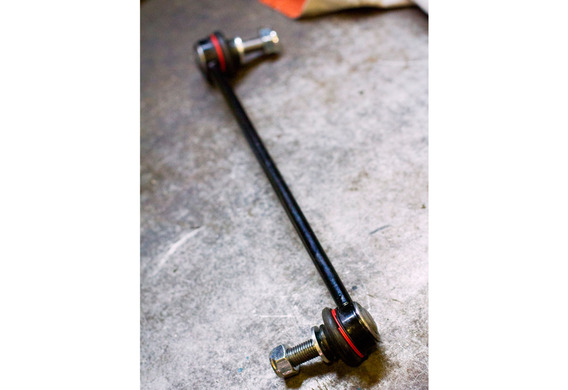
The transverse stability stabilizer is an element of the vehicle suspension. It is necessary to combat the heel of the body on the corners. The stabilizer racks are used to connect the ends of the stabilizer with the central side of the suspension, for example, with a pivoting fist in the independent front wheel suspension. The racks are fitted with joints, which allows the stabilizer to connect to the suspension board. stabilizer frame design
stabilizer frame design
A stabilizer is usually 5 to 20 centimeters long. The jointed joints are connected to both ends of the bar by direct or slightly different hinges, resembling ball supports. The hinged connections are made up of both a clip and a hinged finger in the clip. At the ends of the hinged connections, there is a thread which allows the stabilizer to be attached to the other components by the hake. The racks of the racks are protected by a leak-proof dust which contains the grease of the mean void, which is calculated to preserve the properties when the air temperature is lowered.
In the suspension of some cars, for example, the Volkswagen Multivan T4, using a large section stabilizer, a rack with one ball connection and a simple attachment using the bulk silotine at the end of which the rack stabilizer is attached to the stabilizer. The stabilizer has a prowler through which the end of the rack is ending. This design has been applied for safety reasons in a vehicle intended for long-distance travel.
The racks are asymmetric (that is, the ends of the hinges are reinforced at different angles), left or right. There are suspension structures and symmetric racks that can be placed on either side and any end up or down.
A function that the transverse stability stabilizer bar performs
A stabilizer foot connects the stabilizer with the pivoting fist (or hub if it is a rear suspension) by providing a non-rigid connection that involves limited mobility of the combined elements. This is necessary for the movement of, for example, in the direction of a different force, acting on the body and the suspension (the body shall endeavour to be acutated, and the suspension shall be clambering the wheel to the asphalt), these forces are not broken by the conjugate of the hub and the stabilizer. The stabilizer's rack is essentially a function of damper, with the greatest efforts being made.
This makes it clear that the rack is experiencing a significant load that results in a gradual deterioration of the hinge connections.
Stabilizer rack features
As a result of the constant traffic load, which is compounded by the poor quality of the road, the more often the other elements are out of order. As a rule, they have to be changed once in 1-20,000 km: even if the duster is safe, the ball joints after this condition threshold no longer inspire confidence. Signs of destruction of the transverse stability stabilizer racks:
- During the movement and especially the passage of the left-hand police officers there was a knock.
- The car starts to "swim"-it is self-arbitrary, especially in the ruts, so you have to make friends, "catch the road".
- The corners are elevated.
- The shock absorbers of the purpose, but the body is too swinging in the corners or (s) during braking.
Weakening of joints can easily be diagnosed on its own-it is enough to take a tire iron and, by returning the front wheel to the side, roll the bar to the right to the left at the location where it is attached. If there is an opportunity to get up, you can shake the bar with your hand, so it will be more understood. If you do not have to make any strengthening, the hinge is close to its unsuitability. It's possible that you can even feel the hinges. In addition, if you have recently purchased a car, you should pay attention to the condition of the duster-cracks on the surface and traces of oil will help to determine the advanced age of the stabilizer. If there is a person who is ready to help with diagnostics, you can try to catch the sound that has been heard during the journey of the prestacies and pits. One man climbs into the pit and puts his finger at the hinge. The second one swings the car forward. The chair may not only be heard, but will be felt by a finger. Although the vehicle retains the ability to move, even if the pivot has been disconnected, it is not recommended, as the unpleasing and neural activity of the car is not recommended due to the serious reduction of controllability. Given the fact that dozens of non-original manufacturing substitutes are present in the market, any person can afford to buy a rack for replacement, and many variants are sold on any car market.









